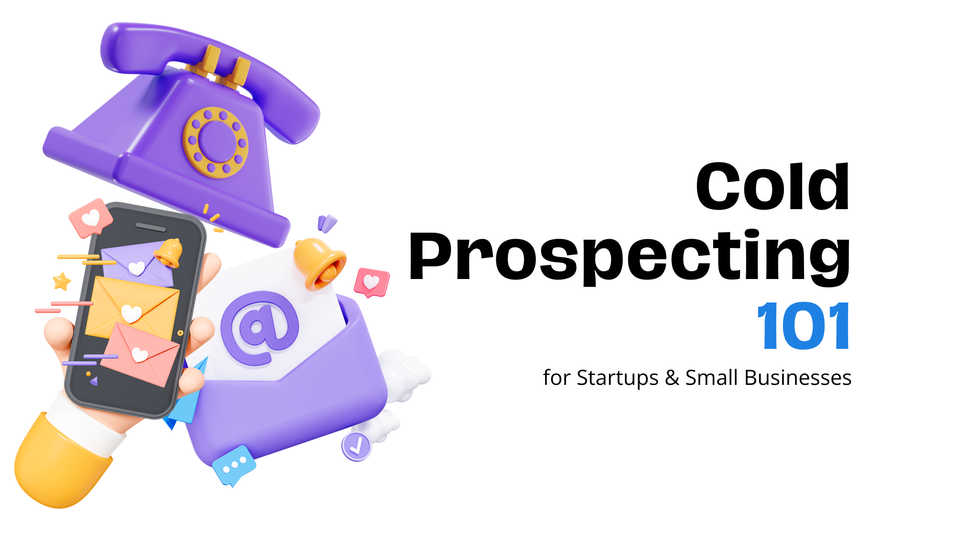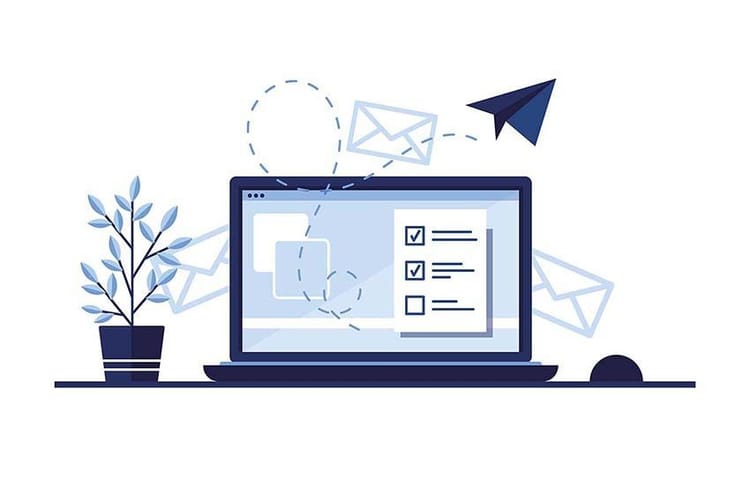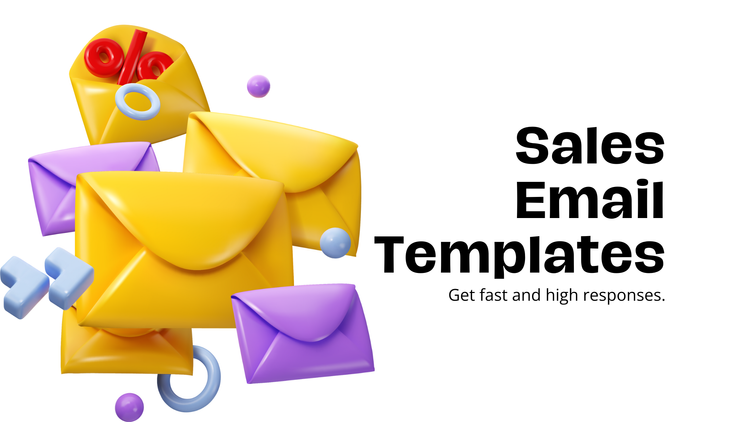Cold Prospecting 101 - for Startups & Small Businesses

Cold prospecting is like the backbone of small businesses and startups. That's why it's crucial to understand all the details of this method. Staying updated on trends and knowing what potential customers prefer or don't like is essential.
In this blog post, let's dive into the specifics.
What is Cold Prospecting?
Cold prospecting is the process of reaching out to potential customers or clients who have had no prior interaction with your business. It's crucial for startups and small businesses because it allows them to expand their customer base, generate leads, and create new growth opportunities.
Cold prospecting helps businesses to proactively seek out potential customers rather than waiting for them to come to you, enabling you to control your growth trajectory.
Difference Between Cold Prospecting and Warm Prospecting
Cold prospecting involves reaching out to potential customers who have had no prior interaction with your business.
Warm prospecting involves contacting prospects who have already shown some interest or engagement with your business, such as through website visits, social media interactions, or previous inquiries.
Cold emailing typically has an average open rate of around 15%, whereas warm prospecting emails can achieve open rates of up to 50% or more.
Types of Cold Prospecting
Out of all these methods, cold emailing and cold calling are the most common ones. Let’s dive a little deeper into these.
Cold Email Prospecting vs. Cold Call Prospecting
Cold Prospecting Best Practices
Cold Calling:
Research First: Know your prospect's industry, pain points, and possible solutions before calling. Personalize your pitch accordingly. Look to top-performing cold calling scripts for inspiration, then tailor your unique approach.
Craft a Compelling Opening: Grab attention within the first few seconds. Pose a question, share a relevant statistic, or offer a benefit.
Pro Tip: AI Phone Calls can automate personalized opening messages, delivering tailored questions or stats that resonate with prospects, complementing email outreach for a cohesive engagement strategy.
Focus on Value Proposition: Clearly communicate the value you can bring to the prospect. Highlight benefits, not just features.
Cold Emailing:
Personalization is Key: Tailor each email to the recipient's needs and interests. Mention recent achievements or challenges they've faced.
Keep it Concise: Busy professionals appreciate brevity. Get to the point quickly and make your message easy to digest.
Include a Clear Call to Action (CTA): Prompt the recipient to take action, whether it's scheduling a call, downloading a resource, or visiting your website.
Remember, regardless of the method, persistence and follow-up are crucial. According to a study by InsideSales.com, 80% of sales require 5 follow-up calls/emails after the meeting.
Is Cold Prospecting Still Relevant?
Yes, cold prospecting is still relevant. And will always be relevant.
Cold prospecting, whether through cold calling or cold emailing, remains relevant in certain contexts, particularly for businesses looking to expand their customer base or reach out to new potential clients.
However, its effectiveness can vary depending on the industry, target audience, and the approach taken. Let's explore both methods:
Cold Calling: In industries where personal interaction is valued or where a direct conversation is necessary to establish rapport and trust. It can also be effective for reaching decision-makers who may not respond to emails.
- According to a study by RAIN Group, 69% of buyers accepted a call from new salespeople in 2020.
- However, cold calling success rates have declined over the years, with only about 2% of cold calls resulting in a meeting.
Cold Emailing: In industries where digital communication is prevalent. It allows for scalability and can be less intrusive than cold calling.
- The average open rate for cold emails is around 24%, with an average reply rate of about 1%.
- Personalized subject lines can increase open rates by 50%.
What’s Next?
Cold calling and emailing take time; warm prospects don’t appear out of thin air. You must research, find email addresses, build a database, and verify information. Often, you won’t receive a reply on the first email – that's why persistence matters.
That's why email lookup tools combined with automation are the future of cold prospecting. They save time and provide accurate data to experiment with different prospecting strategies. Once you've mastered these basics, consider using a web extension to compile your prospect list. Skrapp free email lookup tools can help find and verify addresses to refine your list. You can even start with a LinkedIn email finder to get details of your prospects.
FAQs: Cold Prospecting
What is cold prospecting?
Cold prospecting is the process of reaching out to potential customers or clients who have had no prior interaction with your business or sales team. It typically involves cold calling, cold emailing, or direct outreach through various channels to generate interest and build relationships.
How to approach a cold prospect?
To effectively approach a cold prospect:
- Research the prospect to personalize your outreach.
- Open with value by addressing their potential pain points.
- Be concise and confident in your message.
- Engage with a question to spark a conversation.
- Follow up persistently without being pushy.
What is cold prospecting?
Cold prospecting is the process of reaching out to potential customers or clients who have had no prior interaction with your business or sales team. It typically involves cold calling, cold emailing, or direct outreach through various channels to generate interest and build relationships.
What are the 3 C’s of cold calling?
The 3 C’s of cold calling are:
- Confidence – Speak with authority and belief in your product or service.
- Clarity – Communicate your message clearly and concisely.
- Consistency – Maintain a steady and persistent outreach strategy.
What is the average success rate of cold calling?
The average success rate of cold calling typically ranges between 1% and 3%, though this can vary based on industry, approach, and lead quality. With a refined strategy and effective follow-up, success rates can improve significantly.





